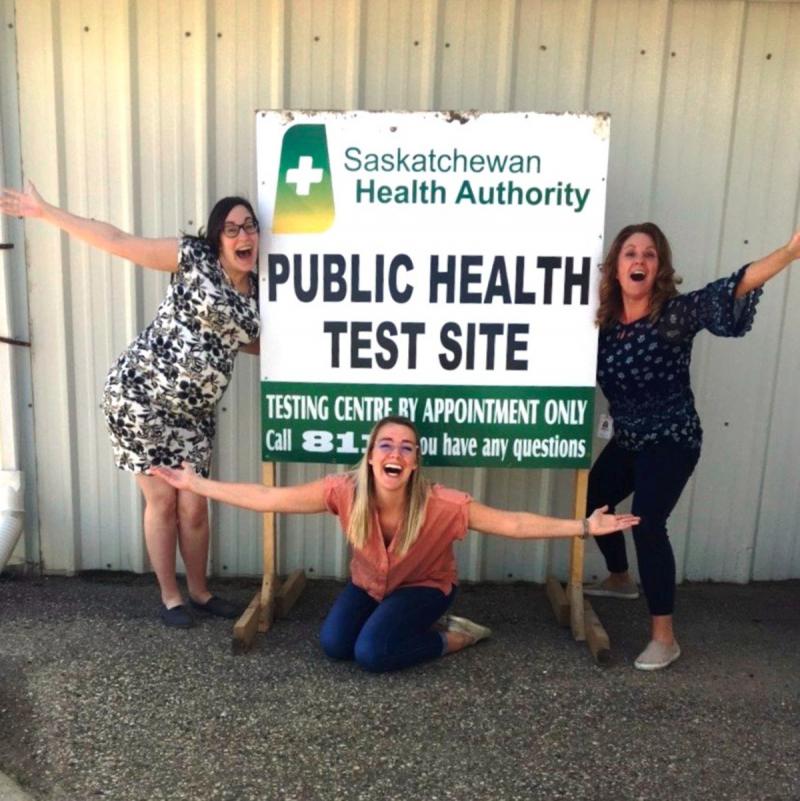Staffing, flexibility essential to fight the pandemic
Pivot. That’s the one word used repeatedly to describe Saskatchewan Health Authority’s (SHA’s) response to the pandemic. COVID-19 created different health system needs and new demands. SHA adapted and pivoted as it strove to stay one step ahead of the virus.
Only by having a nimble workforce was this possible.
“The SHA would not have been successful in its pandemic response without the support and dedication of all the people who were redeployed through labour pools or the supplemental workforce,” said Dean Biesenthal, Human Resources officer for the SHA’s Emergency Operations Centre.
In April 2020, SHA, the Saskatchewan Association of Health Organizations and all five health-care unions (SUN, HSAS, CUPE, SEIU-West and SGEU) signed a temporary letter of understanding (LOU) to support the creation of six labour pools and the supplemental workforce. The LOU also enabled the SHA to use a provincial broadcast system to make system-wide appeals to fill urgent job vacancies.
Staff were deployed to multiple communities through the labour pools located in the province’s integrated service areas of Regina, Saskatoon, Northwest, Northeast, Southwest and Southeast. These labour pools were made up of staff whose work had slowed as the pandemic response increased focus on other service areas, whose unit had closed due to the pandemic or who had volunteered to be part of the pandemic response. The supplemental workforce was made up of individuals who were hired from outside of the organization or who were provided to the SHA by health system partners and other organizations.
At the labour pools’ peak, during the first two waves of the pandemic, more than 2,000 staff were available for deployment. In one instance, the area labour pool and the SHA broadcast system helped fill 112 of 116 shifts in less than a day at the Victoria Hospital in Prince Albert when staff there needed to isolate due to exposure to COVID-19.
Staff in the labour pools were from a myriad of job classifications that included registered nurses, licensed practical nurses, other licensed professionals and administrative roles. They supported a range of areas including contact tracing, the immunization campaign, outbreak management, infection prevention and control, testing and assessment and entryway screening.
During the pandemic’s third wave, a peak of approximately 1,500 staff were ready for deployment.
Behind the scenes, approximately 60 staff on the logistics team co-ordinated deployments and helped keep the health system running smoothly.
While staff were assigned work within their scope of practice, said Biesenthal, they may not have previously performed the task.
“The main attribute they needed was flexibility,” he said. “We saw that flexibility in action every day as targets, demands and expectations changed.”
Phase 3 of the Saskatchewan Re-Open Plan and the lifting of the provincial State of Emergency, starting July 11, triggers a 28-day countdown to end the LOU on Aug 8.
Deployed staff have already started to transition back to their “home” roles as the labour pools and supplemental workforce wind down. The SHA anticipates continued flexibility from its workforce will be required to support the SHA COVID-19 response into the future.
“These staff have been indispensable throughout the pandemic,” said Biesenthal. “They’ve helped SHA cohort staff, respond to outbreaks, intensive care unit surges and supported priority areas, such as our communicable disease response. Many are also currently helping with the vaccination campaign. At times, they’ve left their homes and travelled great distances to pinch-hit when others were sick, needed to isolate or we just needed more staff. Being deployed isn’t always easy but they put their discomfort aside to fight COVID-19. On behalf of the SHA, I thank them for their dedication and flexibility during a difficult time. Our workforce rose to every challenge that came their way.”



